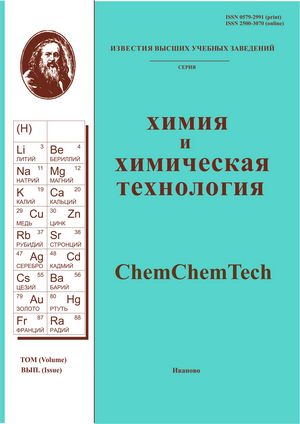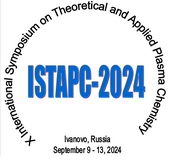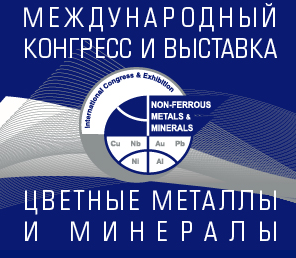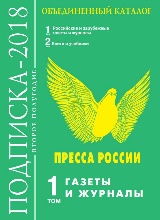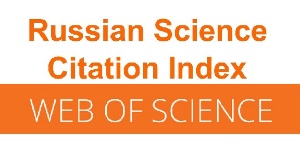ИССЛЕДОВАНИЕ УНИВЕРСАЛЬНОГО КОМБИНИРОВАННОГО ИНГИБИТОРА ДЛЯ НЕФТЕГАЗОВОЙ ПРОМЫШЛЕННОСТИ
Аннотация
Гравиметрическим методом изучена ингибирующая эффективность комбинированного ингибитора сероводородной и углекислотной коррозии стали Ст3 в модельной пластовой воде MI. Коррозионные испытания проведены в герметичных сосудах емкостью 0,5 л на образцах стали Ст3 размером 30×20×1. В качестве многофункционального комбинированного ингибитора использовали госсипольную смолу + МАРЗА. В качестве растворителя были использованы дизельное топливо и керосин. Установлено, что защитный эффект от применения многофункционального комбинированного ингибитора в пластовой воде с нефтью, содержащей сероводород и углекислый газ, с использованием в качестве растворителя керосина колеблется в пределах 75-96, а дизельного топлива 80-100. Комбинированный ингибитор позволяет достичь в среде MI, содержащей сероводород и углекислый газ, в процессе суточных испытаний скорости коррозии стали порядка 0,04 г/м2∙ч лишь в концентрации не менее 70 мг/л. Однако с ростом продолжительности испытаний на порядок подобная скорость коррозии наблюдается уже при концентрации ингибитора 50 мг/л. Это же характерно для углекислотной среды и сероводородного-углекислотных растворов. Исследованы бактерицидные свойства комбинированного ингибитора, по отношению к двум видам Desulfovibriodesulfuricans и Desulfomicrobium сульфатредуцирующих бактерий. Оценено влияние ингибитора на численность бактериальных клеток и образование сероводорода в питательной среде Постгейта- «Б». Показано, что комбинированный ингибитор проявляет бактериостатическое действие по отношению к сульфатредуцирующим бактериям. Выявлено, что степень подавления численности микроорганизмов Desulfovibriodesulfuricans при концентрации комбинированного ингибитора 100,0 мг/л выше, чем Desulfomicrobium. В последнем случае для достижения такого эффекта требуется 120,0 мг/л концентрации комбинированного ингибитора. Исследуемый комбинированный ингибитор вызывает торможение диффузии водорода в стали Ст3 в среде МI, насыщенной H2S и СО2 раздельно и совместно, а также способствует сохранению пластичных свойств стали Ст3 после экспозиции в растворах по сравнению с неингибированными средами.
Литература
Semenova I.V., Florianovich G.M., Khoroshilov A.V. Corrosion and corrosion protection. M.: FIZMATLIT. 2002. 336 p. (in Russian).
Plotnikova M.D., Shein A.B. Inhibition of сorrosion of мild steel in acidic and neutral environments. Izv. Vyssh. Uchebn. Zaved. Khim. Khim. Tekhnol. 2013. V. 56. N 3. P. 35-40 (in Russian).
Menshikov I.A., Shein A.B. Low corrosion protection carbon steel in acidic environments inhibitors of series SOLING. Izv. Vyssh. Uchebn. Zaved. Khim. Khim. Tekhnol. 2016. V. 59. N 2. P. 70-73 (in Russian).
Menshikov I.A., Shein A.B. Protective properties of series solingors in acid hydrogen sulfide-containing envi-ronments.// Izv. Vyssh. Uchebn. Zaved. Khim. Khim. Tekhnol. 2018. V. 61. N 7. P. 91 -98 (in Russian). DOI: 10.6060 / ivkkt.20186107.5703.
Morris W. Foster rase, ethnicity and genomics social classifications as proxies of biological heterogeneity ge-nome res. Microbiol. 2002. V. 12. P. 844-850. DOI: 10.1101/gr.99202.
Gurbanov G.R., Mammadly S.M. Fight against corrosion of oil and gas industrrial equipment in conditions of bacterial infection. Mirovaya Nauka. 2018. № 6 (15). P. 158-163 (in Russian).
Kichenko S.B. Using the standard NIAK MP 01-75 to assess the corrosivity of acidic media from the point of view of their possible effect on the cracking of carbon and lowalloy steels. Praktika Protivokor. Zashcity. 2011. N 4 (62). P. 48-58 (in Russian).
Whorf R.A. Evaluation of the corrosivity of Salym oil fields from the point of view of the ability to cause sul-phide cracking of field pipelines and equipment. Praktika Protivokorroz. Zashchity. 2012. N 1 (63). P. 42-49 (in Russian).
Kichenko A.B. On the effect of hydrogen on steel in hydrogen sulfide corrosion and an approximate assess-ment of the value of hydrogen pressure causing damage to mild steel by VIR. Praktika Protivokorroz. Zashchity. 2003. N 3 (29). P. 28-37 (in Russian).
Vagapov R.K. Inhibition of hydrogenation of steel in hydrogen sulfide-containing media by Schiff bases. Zashchita Metallov. 2002. V. 38. N 1. P. 32 - 37 (in Russian).
Gurbanov G.R., Abdullaeva Z.A. Study of a multifunctional combined inhibitor for the oil and gas industry. Praktika Protivokorroz. Zashchity. 2017. N 2 (88). P. 16-20 (in Russian).
Menshikov I.A., Lukyanova N.V., Shein A.B. Protection of steel from corrosion in acidic media at elevated em-peratures by “soling“ series inhibitrs. Izv. Vyssh. Uchebn. Zaved. Khim. Khim. Tekhnol. 2019. V. 62. N 4. P. 103-110 (in Russian). DOI: 10.6060/ivkkt20186100.5724.
Chirkunov A.A., Kuznetsov Yu.I., Tomin V.P. Inhibition of corrosion mild steel in soft waters with anavidin. Korroziya: Mater, Zashchita. 2007. N 4. P. 18-23 (in Russian).
Kuznetsov Yu.I., Andreev N.N., Ibatullin K.A., Oleiynik S.V. Volatile carbon dioxide corrosion inhibitor of steel. Zashchita Metallov. 2000. V. 36. N 3. P. 266-270 (in Russian).
Menshikov I.A., Shein A.B. Corrosion protection of low-carbon steel in acidic media by inhibitors of solingseries. Izv. Vyssh. Uchebn. Zaved. Khim. Khim. Tekhnol. 2016. V. 59. N 2. P. 70-73 (in Russian). DOI: 10.6060/tcct.20165902.5265.
Grishina E.P., Kudryakova N.O., Predein A.N., Belyaev S.V. Kinetics of corrosion of steel St3 in PO-6СT foaming agent for fire extinguishing. Electrochemical investigation. Izv. Vyssh. Uchebn. Zaved. Khim. Khim. Tekhnol. 2018. V. 61. N 1. P. 30−36 (in Russian). DOI: 10.6060/tcct.20186101.5666.
Gurbanov G.R., Adygezalova M.B., Mammadly S.M. Study of the protective properties of a universal corrosion inhibitor for the oil and gas industry. Praktika Protivokorroz. Zashchity. 2019. V. 24. N 1. P. 29-48 (in Russian). DOI: 10.31615/j.corros.prot.2019.91.1-3.17.
Tsygankova L.E. Inhibition of corrosion and hydrogenation of carbon steel in H2S and CO2 containing medium. Korroziya: Mater., Zashchita. 2008. N 2. P. 26-30 (in Russian).
Tsygankova L.E., Kim Ya.R., Kichigin V.I., Vigdorovich V.I. Investigation of corrosion inhibition and the penetration of hydrogen into steel in formation water simulants. Praktika Protivokorroz. Zashchity. 2005. N 4 (38). P. 29-38 (in Russian).
Miralamov G.F., Gurbanova G.R., Mammadly S.M., Gasimzada A.V. Laboratory research of new inhibitor for prevention of corrosion of the oil field equipment. Vestn. Azerbadzhan. Inzhener. Akad. 2019. V. 11. N 1. P. 61 -70 (in Russian).
Postgate J.R. The sulphate reducing bacteria. Cambridge: Cambridge University Press. 1984. 9/1208.
Gurbanov G.R., Adygezalova M.B., Mammadli S.M. Investigations of the effect of inhibitor-bakericide for oil field equipment corrosion protection. Azerbadzhan. Neft. Khoz-vo. 2019. N 2. P. 38-42 (in Russian).
Kardash N. Method for determination of hydrogen diffusing through a steel membrane. Zashchita Metallov. 1995. V. 31. P. 441-444 (in Russian).
Tsygankova L.E., Kichigin V.I., Protason A.S. Investigation of corrosion inhibitor adsorption and steel hydro-genation simulators using impedance spectroscopy. Korroziya: Mater. Zashchita. 2010. N 11. P. 21-28 (in Rus-sian).
Tsygankova L.E., Ivanishenkov S.S., Kichigin V.I. The study of the inhibition of carbon steel corrosion and sim-ulated formation water using impedance spectroscopy. Kondensir. Sredy Mezhfazn. Granitsy. 2006. V. 8. N 2. P. 105-111 (in Russian).
Tsygankova L.E., Vigdorovich V.İ., Kichigin V.İ., Kuznetsova E.G. İnhibition of carbon steel corrosion in media with H2S studied by impedance spectroscopy method. Surf. Interf. Anal. 2008. V. 40 N 3-4. P. 303-306.
Dubinskaya E.V., Vigdorovich V.I., Tsygankova L.E. Inhibitory protection of steel in hydrogen sulfide envi-ronments. Vestn. TGU. 2013. V. 18. N 5. P. 2814-2820 (in Russian).
Tsygankova L.E., Mozharov A.V., Ivanishchenkov S.S., Kosyanenko E.S., Boldyrev A.V. Anticorrosive protection of steel products of polymerization of aminoamides in carbon dioxide and hydrogen sulfide environments. Praktika Protivokorroz. Zashchity. 2003. N 2 (28). P. 25-29 (in Russian).
Tsygankova L.E., Mozharov A.V., Ivanischenkov S.S., Kosyanenko E.S. Phenolic bases of Mannich as inhibitors of corrosion and hydrogenation of steel in hydrochloric acid environments containing H2S and CO2. Prak-tika Protivokorroz. Zashchity. 2006. N 2 (40). P. 49-60 (in Russian).
Tsygankova, L.E., Kuznetsova, E.G. Anticorrosive protection of carbon steel in the reservoir water imitate in the presence of H2S and CO2. Vestn. Tambov. Un-ta. Ser. Estestv.Ttekhnich. Nauki. 2007. V. 12. N 5. P. 585-589 (in Russian).
Vigdorovich V.I., Fedorov V.A., Alenkin A.V. The influence of pyridine bases on the diffusion of hydrogen through the membrane and the destruction of carbon steel during stretching and bending under hydrogen sulfide corrosion conditions. Izv. Vyssh. Uchebn. Zaved. Khim. Khim. Tekhnol. 2006. V. 49. N 1. P. 91-93 (in Russian).
Vigdorovich V.I., Tsygankova L.E., Loktionov N.V., Shel N.V. Passivation of carbon steel in the neutral chloride media by the inhibited compositions on base of normal alkanes. Book of abstracts of Eurocorr. Maastricht. 2006. P. 190.

